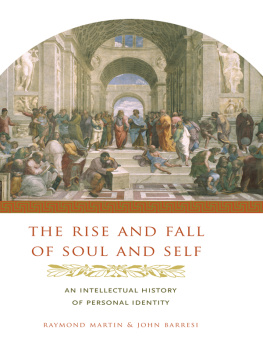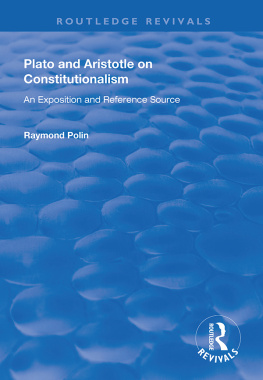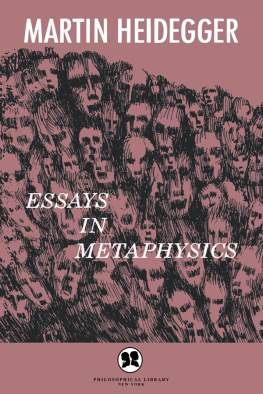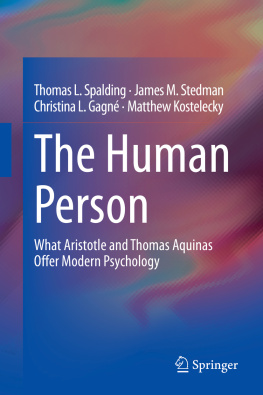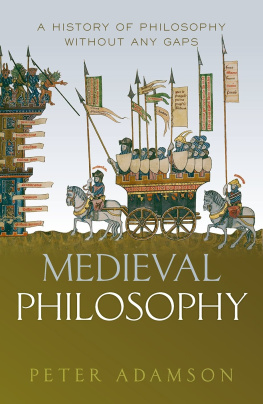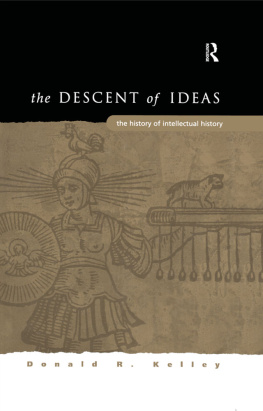THE RISE AND FALL OF SOUL AND SELF

THE RISE AND FALL OF SOUL AND SELF
An Intellectual History of Personal Identity

RAYMOND MARTIN AND JOHN BARRESI

Columbia University Press New York

Columbia University Press
Publishers Since 1893
New York Chichester, West Sussex
cup.columbia.edu
Copyright 2006 Columbia University Press
All rights reserved
E-ISBN 978-0-231-51067-7
Library of Congress Cataloging-in-Publication Data Martin, Raymond, 1941
The rise and fall of soul and self : an intellectual history of personal identity /Raymond Martin and John Barresi.
p. cm.
Includes bibliographical references and index.
ISBN 0231137443 (hardcover: alk. Paper)ISBN 0231510675 (electronic: alk. paper)
1. Self (Philosophy) 2. Self-knowledge, Theory of. 3. Identity (Philosophical concept) I. Barresi, John, 1941II. Title.
BD438.5 M375 2006
126.09dc22
2005032273
A Columbia University Press E-book.
CUP would be pleased to hear about your reading experience with this e-book at .
To
Dorothy Wang
and
Jolien Barresi

CONTENTS

In Alfred Hitchcocks Rear Window, a convalescing photojournalist, played by Jimmy Stewart, is confined to his third-floor apartment. To amuse himself, he spies on his neighbors. As he spies, he begins to suspect, and then becomes convinced, that one of his neighbors, a middle-aged man, has killed his invalid wife. The Jimmy Stewart character tries to convince his girlfriend, played by Grace Kelly, to accept his theory. She shrugs it off, facilely explaining away his evidence. Then, one evening, suddenly realizing that his theory might be right, she comes over to the window next to where he has been sitting, peers out across the courtyard toward the murder suspects apartment, and asks the Jimmy Stewart character to start from the beginning and tell her everything that happened and what it means.
For those parts of the past that interest us, everything that happened and what it means is what many of us who are curious about the past really want to know. The word everything has to be taken with a grain of salt. In the example above, what the Grace Kelley character really wants to know is not literally everything that happened but everything that happened that it would be relevant and helpful to know in determining whether the Jimmy Stewart characters murder theory is correct. Her request for what everything that happened means is for an explanation of how the different pieces of the puzzlethe evidencefit together to yield a coherent picture of unfolding events. Similarly, in the present book, we are not going to try to tell literally everything that happened in the evolution of theories of the self and of personal identity. Rather, our goal is to tell everything that happened that is relevant and helpful to understanding why theory followed the course that it didfrom its earliest beginnings to the present day. The meaning we are after is what this story can tell us about the enterprise of human self-understanding, including current attempts to understand the self and personal identity. By theories of the self we mean explicit theories that tell us what sort of thing the self is, if indeed it even is a thing. By theories of personal identity, we mean primarily theories of personal identity over time, that is, theories that explain why a person, or self, at one time is or is not the same person or self as someone at some other time.
In the West, views about the nature of the self and of personal identity first surfaced in ancient Greece. But at that time, so far as we know, there was no sustained, continuing discussion of these issues. That is, there is no record of theorists explaining what they did and did not like about earlier proposals and then suggesting new alternatives to better deal with outstanding issues. Rather, different theorists made proposals on a variety of related issues, for the most part without explicitly discussing what their predecessors had to say or why they themselves did or did not take a different view. For instance, in Platos dialogue Phaedo, Socrates discusses self and personal identity in connection with his inquiry into the possibility of survival of bodily death, but when Aristotle made a radically different proposal for how the soul should be understood, he did so without directly discussing Socrates (or Platos) view.
A continuous tradition of discussion of self and personal-identity issues began in the second century C.E., during the Patristic Period. This discussion was motivated primarily by the need to make sense of the Christian dogma of the postmortem resurrection of normal humans. At first, the church fathers, who had been trained in Greek philosophy, drew primarily upon Stoicism. Later, they drew upon Platonism. In the Latin West, Aristotelianism did not enter the discussion in a serious way until the thirteenth century. The other great tradition in classical Greece, materialistic atomism, of which Stoicism was one variety, reentered the discussion in the seventeenth century as the main theoretical underpinning for the rise of modern science. Since then, materialistic atomism, in one form or another, has remained the backdrop for the most influential discussions of the problems of self and personal identity.
As modern science came to the fore, the primarily religious concerns of the Patristic Period began to wane. Nevertheless, resurrection remained a preoccupation of most self and personal-identity theorists throughout the eighteenth century. Ironically, beginning in the 1960s modern equivalents of resurrection burst back onto center stage in the debate over personal identity. However, in our own times resurrection scenarios entered the discussion in the guise of science-fiction examples. The earlier discussion occurred in the context of developing a religious theology adequate to understanding personal persistence into an afterlife and the latter in that of developing a secular philosophy adequate to understanding the possibility of persistence in this life. In the former discussion, the issue was how to explain what we know to be true, in the latter, whether it is even possible to explain what we ordinarily assume to be true. Yet, as we shall see, in this case as in so many others in the debate over personal identity, the same issues keep recurring in a different guise.
So where to begin? In ancient Greece, of course. One of the earliest indications of interest in the problem of personal identity occurs in a scene from a play written in the fifth century B.C.E. by the comic playwright Epicharmus. In this scene, a lender asks a debtor to pay up. The debtor replies by asking the lender whether he agrees that anything that undergoes change, such as a pile of pebbles to which one pebble has been added or removed, thereby becomes a different thing. The lender says that he agrees with that. Well, then, says the debtor, arent people constantly undergoing changes? Yes, replies the lender. So, says the debtor, it follows that Im not the same person as the one who was indebted to you and, so, I owe you nothing. The lender then hits the debtor, who protests loudly at being abused. The lender replies that the debtors complaint is misdirected since hethe lenderis not the same person as the one who hit him a moment before.
Next page
